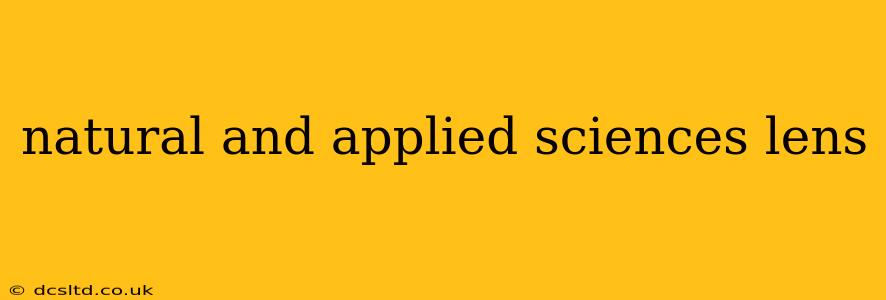Exploring the World Through the Lens of Natural and Applied Sciences
The world around us is a tapestry woven from intricate scientific principles, constantly unfolding before our eyes. Understanding this world requires exploring both natural sciences, which focus on understanding the natural world through observation and experimentation, and applied sciences, which leverage this knowledge to solve practical problems and create new technologies. This exploration reveals a fascinating interplay between fundamental discoveries and their impactful applications, shaping our lives in profound ways.
What are the differences between natural and applied sciences?
This is a fundamental question that distinguishes the two branches. Natural sciences seek to explain the how and why of natural phenomena. Disciplines like biology, chemistry, and physics fall under this umbrella. They aim to uncover fundamental truths about the universe, from the smallest subatomic particles to the largest galaxies. Applied sciences, on the other hand, take this fundamental knowledge and use it to create solutions to real-world problems. Examples include engineering, medicine, and agriculture, which apply principles from natural sciences to develop technologies, treatments, and improved practices. The key difference lies in their primary objective: understanding versus application.
What are some examples of natural and applied sciences?
Let's delve into specific examples to clarify the distinction. Consider the discovery of the structure of DNA (natural science – biology). This fundamental understanding paved the way for advancements in genetic engineering (applied science – biotechnology), gene therapy (applied science – medicine), and forensic science (applied science – criminal justice). Similarly, understanding the principles of electricity and magnetism (natural science – physics) led to the development of countless technologies, from power generation (applied science – engineering) to medical imaging (applied science – medicine). The relationship is symbiotic; breakthroughs in natural sciences fuel progress in applied sciences, while the demands of applied sciences often drive further research in natural sciences.
How do natural and applied sciences interact?
The interaction is not a one-way street. Applied sciences often push the boundaries of natural science. For instance, the need for more efficient solar panels (applied science – engineering) has led to intensive research in materials science (natural science – chemistry and physics), resulting in the development of novel materials with improved energy conversion efficiency. Similarly, the challenges posed by climate change (a complex issue involving multiple natural sciences) have spurred the development of renewable energy technologies (applied science – engineering) and carbon capture methods (applied science – environmental science). This dynamic interplay drives innovation and progress across multiple fields.
What are some career paths in natural and applied sciences?
The possibilities are vast and varied. A background in natural sciences can lead to careers in research, academia, environmental conservation, or scientific journalism. Applied sciences open doors to engineering, medicine, technology, agriculture, and many other fields. The specific career path depends on individual interests and educational choices. However, a strong foundation in scientific principles is crucial across the board.
What is the importance of natural and applied sciences in society?
The impact is undeniable. Natural and applied sciences are the engines of progress, driving improvements in healthcare, technology, agriculture, and environmental sustainability. They improve our quality of life, address global challenges, and shape our understanding of the universe and our place within it. From the development of life-saving medications to the creation of sustainable energy solutions, the contributions of these fields are essential for a thriving society.
In conclusion, the lenses of natural and applied sciences offer complementary yet distinct perspectives on the world. Understanding their individual contributions and their dynamic interplay is crucial for appreciating the profound impact of scientific inquiry on our lives and the future of humanity. By fostering collaboration and continuous exploration, we can unlock even greater potential for innovation and progress across both fields.
